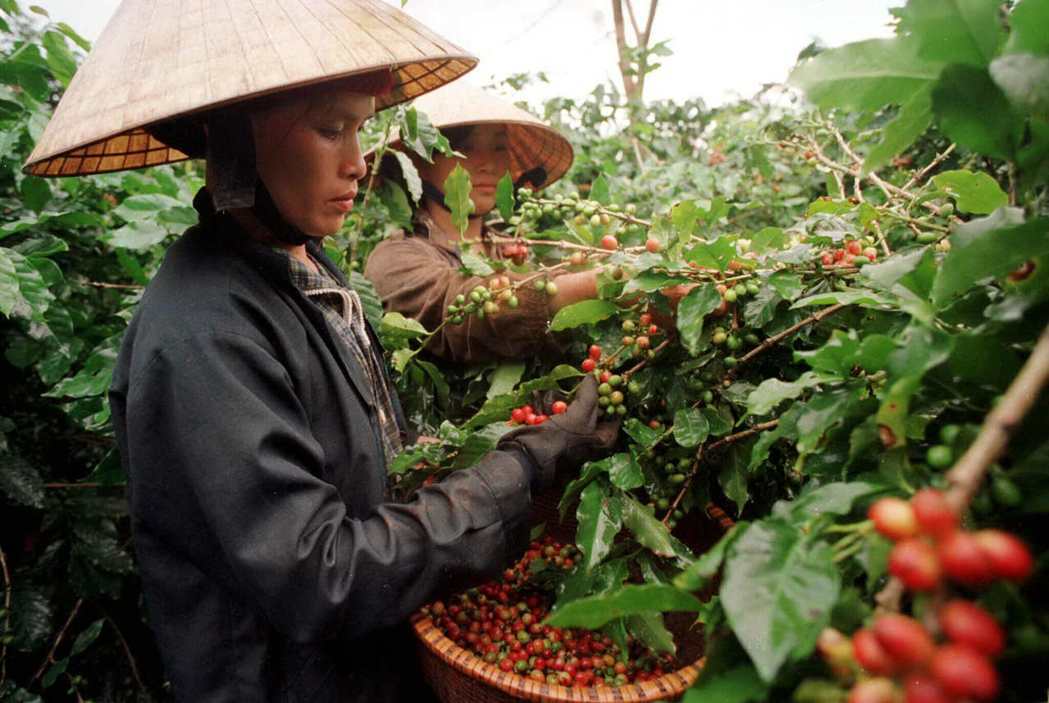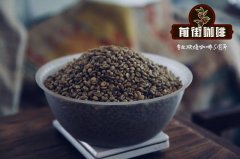Vietnam coffee beans cultivation status quo-ethnic minorities try to reverse Vietnam coffee reputation

Professional coffee knowledge exchange more coffee bean information please follow the coffee workshop (Wechat official account cafe_style)
Vietnamese farmers pick coffee beans.
Ethnic minorities in Vietnam are trying to plant quality machine coffee beans to polish the signboard of Vietnamese coffee. Vietnam, which has a reputation as the world's second-largest coffee producer, sells more than instant coffee, they say.
Roland. Liang GE (transliteration, Rolan Co Lieng) shuttles through the greenhouse to check the caramel yellow coffee beans that have been dried in a net for months. She picked up a handful and smelled the beans, which would soon be ground, baked and sold to Vietnam, Japan and Germany.
Roland comes from the traditional small-scale coffee farmers of the Goho 39th Ho, an ethnic group that has lived at the foot of the Dalangping Mountains for a century. Roland's parents planted coffee trees, as did her grandparents, who got Arabica coffee seeds from the French in the early 1920s.
Roland, who fell in love with coffee when she was very young, told Deutsche Welle: "growing up, my parents had a cup of Nestle coffee before they went to church at 4 o'clock every morning." I was fascinated by the sweet and rich aroma. After they go out, I always smell the cup and try to touch some coffee with my fingers. "
Today, she turns her passion for coffee into work. She worked with the people of the Koho community to set up cooperatives in an attempt to reverse the reputation of Vietnamese coffee and defend community traditions.
Vietnam is the second largest coffee producer in the world, after Brazil. But coffee lovers often don't like or even hear of Vietnamese coffee. Denis Seudieu, chief economist of the International Coffee Organization, explained that this is because 95% of the coffee produced in Vietnam is robastian beans, which are easier to grow than Arabica beans, but are considered inferior because of their high caffeine content and bitter taste.
Sudierz said: "the market and consumers prefer the flavor and taste of Arabica beans, so Robasta beans often become instant coffee." As far as marketing is concerned, telling people that your coffee is made of robasta beans will not produce a positive image, so there are not many advertisements for Vietnamese coffee. "
In the 1990s, Vietnamese farmers made meagre profits from growing coffee beans because the government bought all coffee beans at a single price, a situation that did not change until the private market was opened.
The Koho community used to grow two kinds of coffee beans, but now they only grow Arabica beans in order to make the world know more about Vietnamese coffee and increase profits. Langping Mountain provides fertile soil to grow Arabica beans, while Arabica beans grown at high altitudes are of better quality.
Roland says they grow it organically, not using any chemical crops, but composting with food waste. They also plant many different plants between coffee trees to provide shade and more oxygen.
The Koho community exports these organic coffee beans, but also bakes them themselves, which is rare among Vietnamese coffee farmers. The average coffee farmer sells raw beans directly to large manufacturers to make instant coffee.
The Koho Community Cooperative was established in 2012 to help more than 60 families sell coffee and promote tourism. All the profits are invested in the village, successfully keeping people who used to work in the city to work in the community. Some Vietnamese coffee manufacturers have switched to selling coffee beans from the Koho community, saying that the Koho community has led Vietnamese coffee to take a successful step.
Important Notice :
前街咖啡 FrontStreet Coffee has moved to new addredd:
FrontStreet Coffee Address: 315,Donghua East Road,GuangZhou
Tel:020 38364473
- Prev

Brazilian coffee production hit a record high in 2018 global coffee bean prices are expected to remain low
Professional coffee knowledge exchange more coffee bean information please follow the coffee workshop (Wechat official account cafe_style) according to the second survey conducted by Brazilian state supply company (Conab) this year (released on May 17th), Brazilian coffee production this year will reach an all-time high. The total output will reach 58 million bags (60 kg per bag), an increase of 29. 5% over the previous year's harvest of 44.9 million bags.
- Next

Variety introduction, baking analysis and brewing suggestion of Komatina cranberry coffee producing area in Kenya AB
Professional coffee knowledge exchange more coffee bean information please follow the coffee workshop (Wechat official account cafe_style) KenyaAB Kiambu Gitwe Kenya AB Komatina cranberry production area: Qianbu Micro area: Gitwe soil: volcanic clay altitude: 1400 m-1800 m varieties: Lmur28, SL-34, Ruiru 11 treatment: Kenyan 72-hour washing 01 | production
Related
- Detailed explanation of Jadeite planting Land in Panamanian Jadeite Manor introduction to the grading system of Jadeite competitive bidding, Red bid, Green bid and Rose Summer
- Story of Coffee planting in Brenka region of Costa Rica Stonehenge Manor anaerobic heavy honey treatment of flavor mouth
- What's on the barrel of Blue Mountain Coffee beans?
- Can American coffee also pull flowers? How to use hot American style to pull out a good-looking pattern?
- Can you make a cold extract with coffee beans? What is the right proportion for cold-extracted coffee formula?
- Indonesian PWN Gold Mandrine Coffee Origin Features Flavor How to Chong? Mandolin coffee is American.
- A brief introduction to the flavor characteristics of Brazilian yellow bourbon coffee beans
- What is the effect of different water quality on the flavor of cold-extracted coffee? What kind of water is best for brewing coffee?
- Why do you think of Rose Summer whenever you mention Panamanian coffee?
- Introduction to the characteristics of authentic blue mountain coffee bean producing areas? What is the CIB Coffee Authority in Jamaica?

